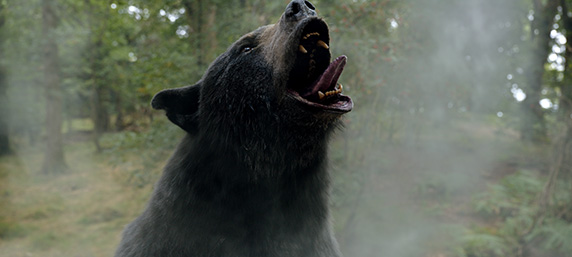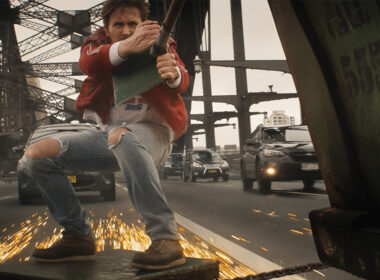Aftersun
Whoever said memories are unreliable was too lost in the specifics. No one cares about the order of things or the fine details of a particular moment, but we do care about the broader feeling a memory evokes. Memories have to be reliable; they wouldn’t provide comfort otherwise.
Aftersun is a film about a twenty-year-old memory. Calum (Paul Mescal) is the too-young-to-be-responsible father with his 11-year-old daughter Sophie (Frankie Corio) staying at a Turkish holiday resort. You know the kind if you’ve ever been to a Southern European/Mediterranean resort: small, quaint villas, packed pools, British tourists with burnt skin drinking pints, karaoke nights, and Britpop classics blaring in the club. The details are all curated with careful precision by filmmaker Charlotte Wells (this is her feature debut), with the story based, not surprisingly, on her relationship with her father.
It’s about trying to remember a moment of your past. It all seems very lucid, but strangely hazy at the same time.
There isn’t much to the story in this film. Calum and Sophie spend their days together in the resort, occupied with activities that are not that important. There’s a sense of urgency, as if they have to spend every bit of time they have together, regardless of what they actually do. Wells sprinkles crumbs throughout the film as a hint of something hidden from the audience, and it’s at those moments that the film shows the powerful truth at its emotional core. We are not just seeing a father and daughter together.
Still, we can’t quite discern what it is we are seeing, because the film is told entirely through the perspective of young Sophie.
Sometimes Wells cuts in a scene with an older, now adult, Sophie. She’s telling us that the story we are seeing is Sophie’s piecing together of the scattered moments of the week with her father as she attempts to understand an unresolved mystery. This point of view is elevated by the moments Sophie isn’t around, when the camera follows Calum in close-tight-frenzied shots, like scattered and unconnected shots. In one of the film’s climaxes, Sophie sings alone in karaoke to R.E.M.’s “Losing My Religion” and, since her father has refused to sing a duet with her, refuses to return to the hotel with Calum. Later we see him running away deliriously into the sea. Did that actually happen? It doesn’t matter: the action may be unreliable, but the emotion in the memory is true to heart.
Wells knows how to use songs to complement the dramatic value of a scene. The most talked about scene features Calum dancing to Queen and David Bowie’s “Under Pressure”, and it’s easy to see why. It feels as if we’re witnessing an out-of-body experience: someone entirely engulfed in their own world. And we are registering that scene in our minds as if this particular moment constitutes the missing piece of the puzzle. Wells captures this feeling so perfectly that it unlocked memories in myself I thought I had lost.
The scene is terrific, and you can understand why it caught the attention of most film critics, but the one that struck me harder comes earlier in the film. Blur’s Tender plays casually in the background in a loving moment between father and daughter. As the scene proceeds, small, unnerving details about Calum start poking through, nothing too specific to introduce a twist in the action, but enough to make one question whether an 11-year-old could understand them. At the same time, the song slows the tempo, Damon Albarn’s voice warps, and Graham Coxon’s melodic guitar extends as if we’re being unwillingly led into a dreamland. The verse “Tender is the ghost // the ghost I love the most // hiding from the sun, waiting for the night to come” echoes so loudly that the song’s melancholy chorus almost becomes threatening: “Love’s the greatest thing that we have // and I’m waiting for that feeling to come”. Sophie will never listen to that song in the same way again. She will try not to cry in front of her friends when she hears it in a pub, and she will skip the track on the CD unless she’s alone.
To capture loss and longing so sincerely is nothing short of an achievement.
Verdict: 5 out of 5
For every father scared the time is up, and every daughter (or son) working through the trauma of loss. This film speaks truths.

Cocaine Bear
In 1985 a black bear was found dead in a National Park in Georgia, in the US, next to a bag of drugs. The critter had bumped into a duffel bag of cocaine that was dropped from a smugglers’ plane, eaten some of the contents and then passed away. There is nothing else to this story but the sad tragedy of an innocent animal, and the chance to demonise drug traffic.
But writer Jimmy Warden read this story and thought: what if the bear survived and went on a murdering rampage to pursue even more cocaine? A bear on cocaine? Hell, there’s your title, Cocaine Bear!
“How come no one ever thought of that?” he probably mused naively when the idea came to him. I don’t doubt someone else did, but to have the guts to actually follow through, as Warden did, is a whole other story.
Cocaine Bear delivers on every single promise made by that ridiculous title. This doesn’t mean it’s a great film, but you do get what you asked for.
Warden and director Elizabeth Banks understand that the premise alone does not make the film. Snakes on a Plane lived on and died from its ridiculous hype. That film didn’t work beyond winking at the audience as if it were constantly asking “isn’t this idea silly?” But Cocaine Bear plays it all with style and candour; writer and director clearly know that any misstep would ruin the viewing experience.
So the story, because there is one, is fine. A drug smuggling deed gone wrong results in a bundle of bags of cocaine being scattered throughout a forest. The traffickers, played by Ray Liotta, O’Shea Jackson Jr, and Alden Ehrenreich, are trying to recover it, with a cop on their tail (Isiah Whitlock Jr). They meet in the forest with Sari (Keri Russell), looking for her daughter (Brooklynn Prince), with the help of park ranger Liz (Margo Martindale).
The plot is there as a conduit for featuring the bear. Just that. For a moment, the film hints at a clunky subtext about Reagan’s war on drugs. But, by the time we get to the scene where two children are daring each other to eat a spoonful of cocaine, any pretence that the film is anything other than a demented fast-paced romp flies out the window.
The film has an energetic giddiness, especially in Warden’s script. It’s as if the film came from the dumbest idea imaginable, that then devolved into a direct-to-VHS low-budget film that you would have rented back in 1992, only to be disappointed that the promised was absent for most of the movie; that is, until a shoddy animatronic entered in the third act. Imagine if Canon Films, or Roger Corman, had a bigger budget and could run their imaginations amok.
There is something cynical about having a big Hollywood studio backing a film like this, and that comes through. Besides the gruesome gore and the “kids happily taking cocaine with no consequences” scene, there’s not a lot more that’s transgressive about Cocaine Bear. It feels too whitewashed, cop-loving and corporate. Banks’ direction is adequate, but the concept deserved a crazier approach, with an edgier and bolder stylistic palate.
Why am I complaining, though? Cocaine Bear is precisely what it’s supposed to be. Nothing more, nothing else: 100 per cent pure and uncut.
Verdict: 3 out of 5
For those who saw the title and thought, “oh, I have to see that”: this movie is for you.




